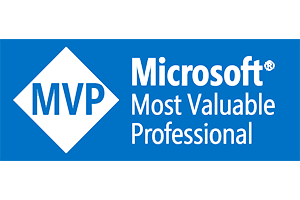If you are working with Dell, they provide a management tool called Dell OpenManage Enterprise where you can easily manage your hardware and firmware. You can add servers to a group and then assign a ‘Catalog’ to that group. This catalog contains firmware information for Dell OME to download and install on the group. By […]
Run Microsoft Azure Services Anywhere
Let’s face it, Microsoft is a software company and always has been. They run a bunch of hardware in datacenters worldwide because they needed a place for their software to run so customers can use it. Azure Services anywhere Microsoft Build 2021 came along with new announcements which makes the direction more clear than […]
Azure Stack HCI is not your Windows Server HCI replacer
Great news, last week Microsoft has released Azure Stack HCI as “General available”. The product is now ready for production use and all the prerequisites on the Microsoft side has been met such as 24/7 support etc. The past few months I talked to a lot of people about Azure Stack HCI and the Windows […]
Azure Stack HCI, Edge, Hub & Azure Arc
The last few years have been interesting, especially for a Microsoft infrastructure-oriented guy like me. We’ve seen the change from just providing virtual machines and storage to the DevOps world and providing platforms in real-time instead of delivering when asked. The cloud was of course the biggest competition for the IT professional, as developers and […]
Automatically initialize variables in Azure Functions
When working with Azure Functions and passing parameters in the HTTP request, this piece of Powershell comes in handy every time. $Request.Query.GetEnumerator() | ForEach-Object { New-Variable -Name $_.Key -Value $_.Value } This will make a variable from each parameter you pass in the request.So for example; If you request the following Azure functions URL:https://darryl.azurewebsites.net/api/Get-Info?code=WrUum7c6ZM3YyyjY4O6Im8YtL7asx0ShxXJ5pUCDaL4832lsQYZkng==&myname=darryl […]
My take on Azure Stack HCI
I never really do opinion posts, but when I started writing this.. text just kept coming.. enjoy 🙂 So the word is officially out. Windows Server Software-Defined (WSSD) is going to be rebranded to Azure Stack HCI for Windows Server 2019. When I first heard about it I was, probably just like you, surprised and […]
Align VMs with Storage
With Storage Spaces Direct, every Metadata / write IO is redirected to the node who owns the Cluster Shared Volume. If you’re using NTFS the volume will be in “Block Redirected Mode”, if ReFS is used the volume will be in “File System Redirected Mode”. You can see this with Powershell; Get-ClusterSharedVolumeState. More info on […]
Two-way mirror vs Nested resiliency
In this blogpost I’m testing out the new resiliency method which we can use with 2-node clusters in Windows Server 2019. This blog is not meant as performance showcase for the hardware but to show the differences between a regular Two-way mirror and nested resiliency volume. Why do I want nested resiliency? Nested resiliency helps […]
Storage Spaces Direct in Azure – Performance
Starting this blog with questions: How do you deploy a highly available fileserver in Azure? Do you count on the SLA (99.9%) of Azure when using premium storage, so doing a single fileserver? How does it perform? In this post I’m diving in on Storage Spaces Direct in Azure, giving a few guidelines but also […]
Kill TCP connection with Powershell
Sometimes you have an application that keeps connections open while they should be closed. Because Windows does not seem to have the capability to kill an connection without killing the whole process we’ll to use a 3rd party tool called cports.exe. Download here: https://www.nirsoft.net/utils/cports-x64.zip $ProcessName= "BackgroundTransferHost" $State = "CloseWait " while ($true) { sleep -Seconds […]


